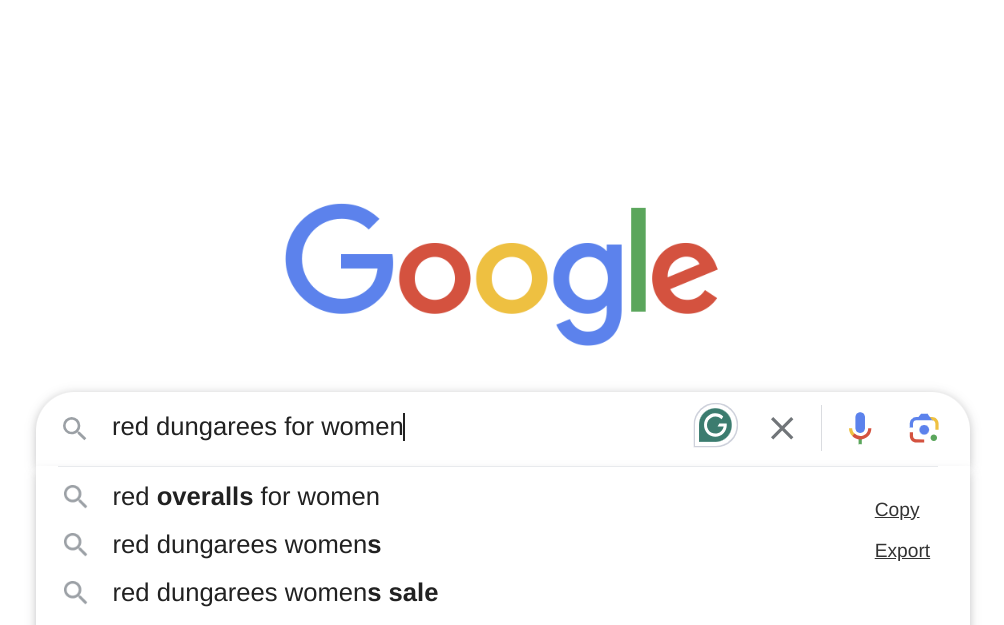
The ultimate SEO product page checklist for online stores

Online stores are an ever-changing platform, with retailers attempting to win over users through various means of persuasion on their product page. Different methods have proved stronger over the years, from overzealous pop-ups to subtle CTAs. But how do you optimise a product page for e-commerce SEO? Don’t stress, as we’re here to give you the ultimate SEO product page checklist for your online store!
What you need is a product page that drives conversions. If aligned with effective SEO practice, this can be sure to happen for your site. From imagery to social proof, our checklist offers 6 key ways you can increase that all-important traffic and profit.
A number of things can be done to optimise your product page, and we’re here to guide you through 6 key approaches that are sure to drive sales and target what users look for.
Imagery and video additions
Visual stimuli can be the difference between gaining a customer or losing a valuable sale. Use image SEO practices to optimise your images for both rankings and user understanding. Customers expect to be able to see the products they want to buy- not only does it provide reassurance, but it creates an attractive product page that customers want to engage with.
First impressions count, and often eye-catching images or videos are the features that do the heavy lifting for forming customer opinion. Videos take reassurance one step further by putting your product to action. If it’s brought to life on your site, extra details can be shown off to your customers.

Our Organic Lead, Amy Leach, says that:
“Adding images and videos can have benefits for online stores.
However, my only caveat is it can often depend on how the site is built- you’ve got to be super careful in terms of making sure you’re giving the user enough information with your visual aids while trying not to harm page speed.
It’s all about finding that balance.”
Optimise product names and descriptions
The name of a product should be displayed in a clear font, using a H1 or H2 for SEO best practices. Its positioning should also be clear, with a concise but understandable name. As for its description, this is a great opportunity to include keywords (whilst not stuffing to avoid looking spammy) and really sell your product.
Including words that align with search intent and usual keywords helps Google rank your site and allows users to find what they’re after. Descriptions can be utilised as signposts, and dividing them up into digestible sections is best practice to avoid a description that’s way too long for a customer.
As the screenshot below from Google search shows, there are many niche, long-tail keywords that a user will use to find specific products. Make sure you optimise each product with the most descriptive adjectives so that they are picked up by search engines and displayed for the relevant queries.

Include trust badges to boost conversions
Social proof, such as positive reviews or a section that shows any happy customers, add that stamp of authority onto your product. A user feels much more trusting of what you sell and are therefore more likely to purchase. If there’s any place on the product page that would suit a relevant bit of social proof, it’s worth implementing.
Additionally, if your business has any relevant reputable information (such as secure transaction processes or policies), whack it onto the product page! Worries surrounding trust can lose you important business.
One of our SEO Executives, Alisa Thorley, supports the use of trust signals:

“We follow the Google E-E-A-T signals, and trust is of course one of those, and so is huge for increasing conversions and winning over a potential user.
Trust is a massive signal and can be the difference between gaining or losing business. Showing trustworthiness through online reviews and other methods will lead to online success as users can feel confident investing in you.
So, incuding trust badges in your checklist can definitely boost conversions.”
Create call to actions that convert
CTAs can provide the role of encouraging a customer to engage. As your site is an online store, a desired action would be a click of the buy button. It can have the final impact on what a user does next while providing clickable anchor text that takes them in the right direction.
Keep CTAs clear and direct– they need to be sure of themselves to show how sure you are of yourself as a business. Make them flow naturally within the user journey to appear less overbearing and demanding. CTAs provide an option, not an obligation, so the power lies in persuasion to achieve conversions.
Keep technical SEO up to scratch
You want your product page to run smoothly, right? Keeping on top of technical SEO allows for a smooth user experience on your site and a seamless buying journey. If you have a slow loading page or unoptimised navigation tools, then a user is more likely to seek your product elsewhere.
Alongside this, mobile SEO must be utilised. With the world becoming increasingly more mobile, especially ecommerce sites, it’s important to optimise for any device a purchase may be made on. After all, user intent can differ between desktop and mobile, and you don’t want to limit your customers just because of their chosen device.
Add contact details
You should feel approachable as an online store, and contact details can help you with this. Any burning questions that sway a user towards purchase can be answered through a helpline, chat function or phone number/email. It’s important to place these details in a place accessible to a customer so they can be sure to reach out.
Perhaps providing a clickable feature or anchor text such as ‘contact us’ fits with your site structure. Just make sure it’s easily navigated and not hidden in the depths of the product page.
Learn more about SEO-friendly product pages
And that’s a wrap for our ultimate checklist! Hopefully, now you have a clear understanding of what important elements should go into a product page that are beneficial for SEO. Have a question that’s not been covered here? Feel free to ask our SEO experts! Our trustworthy team creates strategies that target every aspect of optimisation that your site may need. Give us a call at 0161 327 2635 or email us at info@embryo.com.
FAQs
Answered by our SEO team
How long should my product description be?
The word count of product descriptions is circumstantial and we’d recommend using competitors as a “Blueprint” for meeting Search Engines’ expectations. The important thing to do is make your product descriptions helpful and clear.
Is including product reviews a good idea?
Definitely. Adding Product Reviews to your website helps legitimise you as a business and demonstrates to Search Engines that what you’re offering is already tried and tested. Tip: make sure to include Review schema on your page to make sure Search Engines fully understand it!
Why should I add a ‘similar items’ section?
To keep your audience engaged and distribute authority signals across the website, which helps improve Organic rankings.